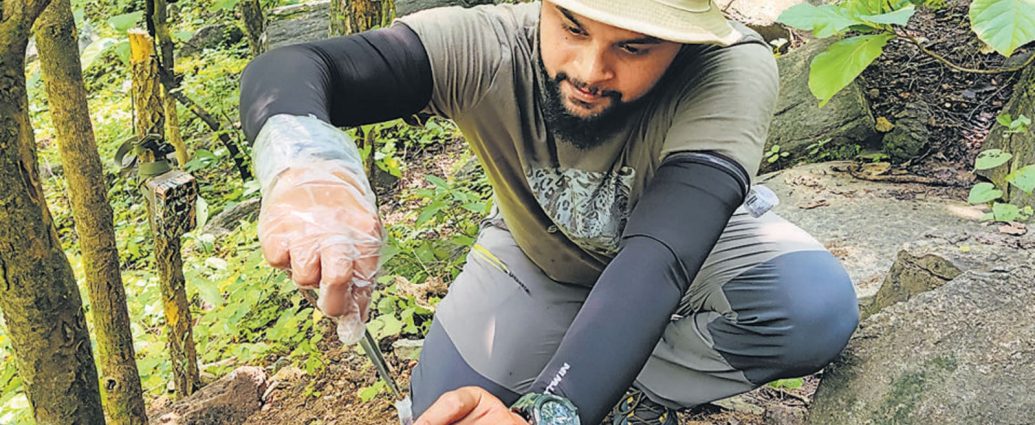There’s a reason wildlife biologists treat fresh animal scat like it’s a heap of gold. It is a gold mine of information. The first things fresh scat offers, of course, are a) confirmation that you are in an animal’s territory and b) initial clues about the particular animal’s diet and health.
Take the nuggets to a lab and a far richer tale unfolds. The scat has, after all, emerged from a wild animal’s body, carrying fragments of its DNA and the DNA of things that it has recently eaten; hints of the hormones and compounds that its body is producing; even clues to whom it has been mating with, and how far away they might live. It can also offer hints about the population of the species, dietary breadth and eating patterns, even how stressed this particular animal currently is.
Scat typically contains cells from the inner lining of the gut. Extract DNA from these dead epithelial cells and one can tell the species and sex of the individual. One can also tell what parasites and pathogens the animal was carrying, which can offer clues about the overall health of the species in a particular area.
Animals can also carry, in their faecal samples, the DNA of what they have eaten. Tiger scat, for instance, can yield hair or other remnants of a deer it fed on. A sample of deer scat can yield data on shrubbery and grass. Get enough such samples over time and one can piece together a picture of how prey patterns or foraging patterns (and thereby landscapes) are changing.
With enough faecal samples, one could estimate the size of a species population in a particular landscape, their gender ratios, even their interrelatedness (if related individuals mate over and over, which does happen if the population is small and isolated, harmful genetic variations may increase in frequency due to inbreeding).
DNA markers can confirm whether two populations of the species are mating (a much healthier pattern, and one that also suggests a healthy interconnectedness).
Using genetic data from different populations in the landscape, one can track how changes in forest cover, agriculture, human habitation or features such as roads are impacting movement and gene flow.
Faecal samples also contain hormones and their metabolites, which provide information about physiological factors such as stress; and they contain remnants of the hormones circulating in the animal’s body, which can be studied for clues about the individual’s reproductive health.
Although blood and tissue samples would certainly provide better quality and quantity of DNA, obtaining them without stressing the animals is nearly impossible. Getting enough such samples for a population-level study is even more challenging. With poop, one need have none of these concerns.
What one does have is the immense challenge of getting to the scat before it is degraded or stomped on, covered by leaves or picked apart by another jungle inhabitant. Some animals, such as big cats, obligingly defecate on or near roads. Many others prefer dense canopy, vast grasslands or heaps of leaf litter. Collecting scat, as a result, can take hours of trudging carefully through dense foliage, eyes trained on the ground.
So the next time you step in some, rein in the annoyance. You just stomped into a biologist’s El Dorado.
(Abhinav Tyagi is a molecular ecologist and a research scholar at the National Centre for Biological Sciences, Bengaluru)
